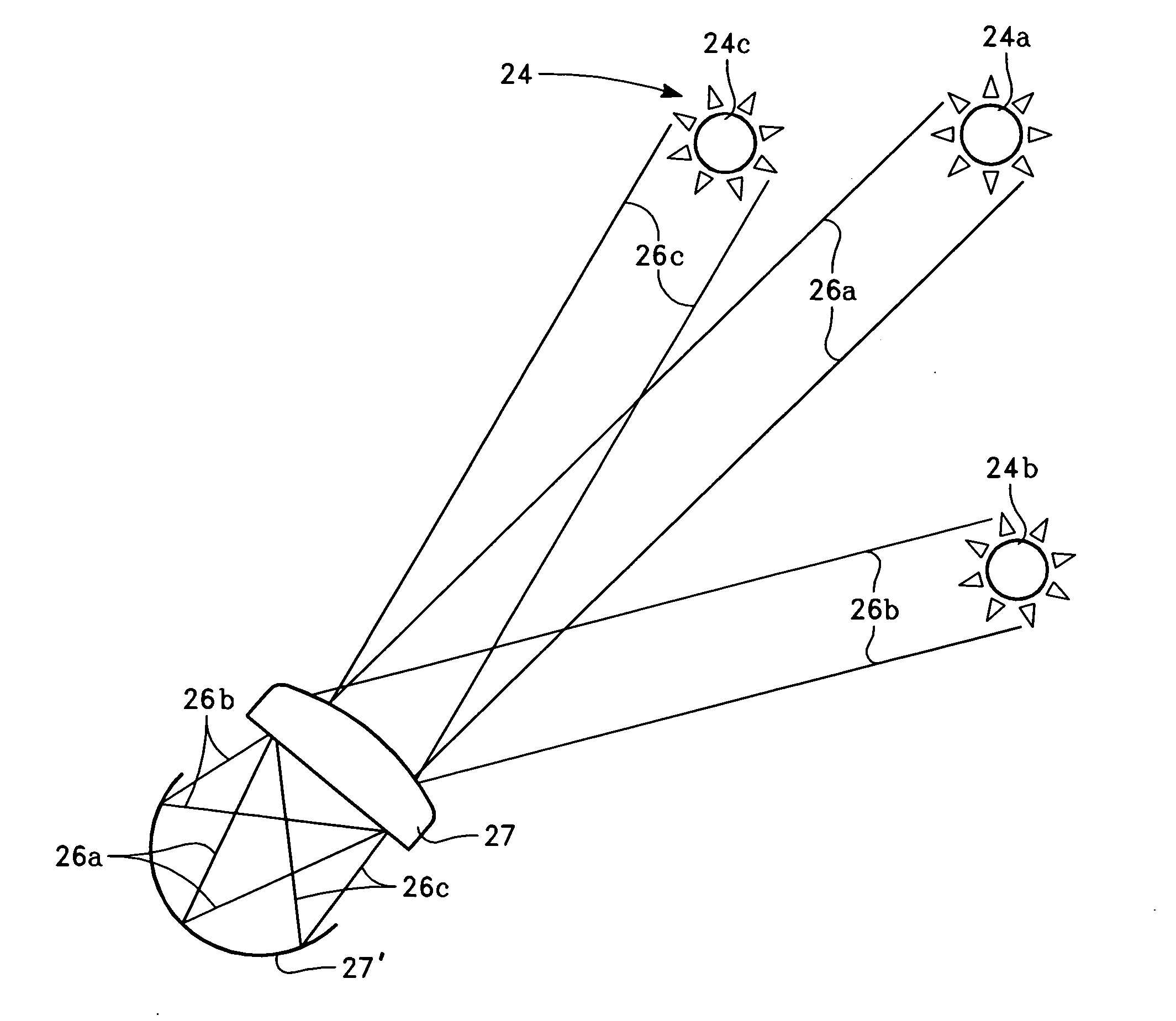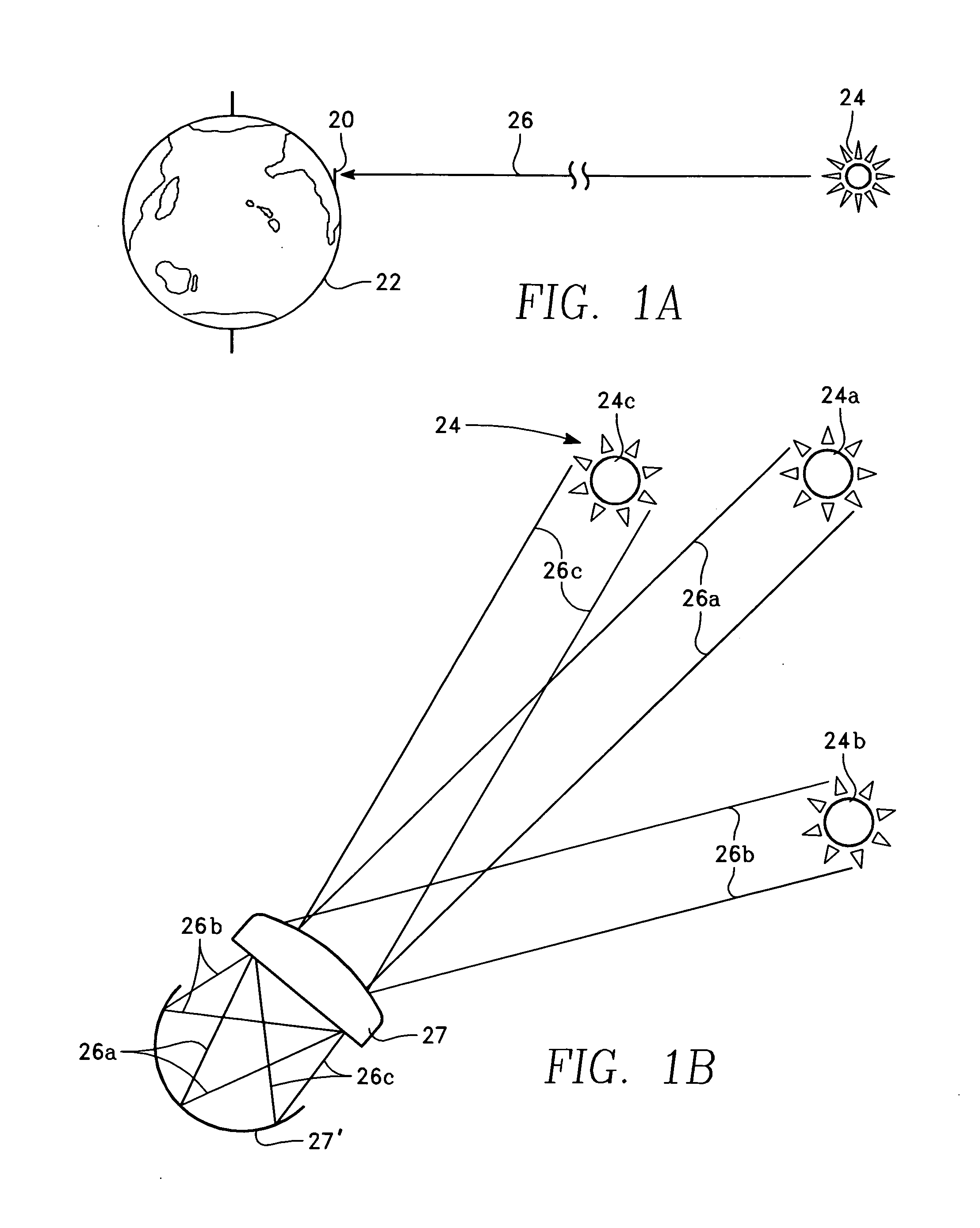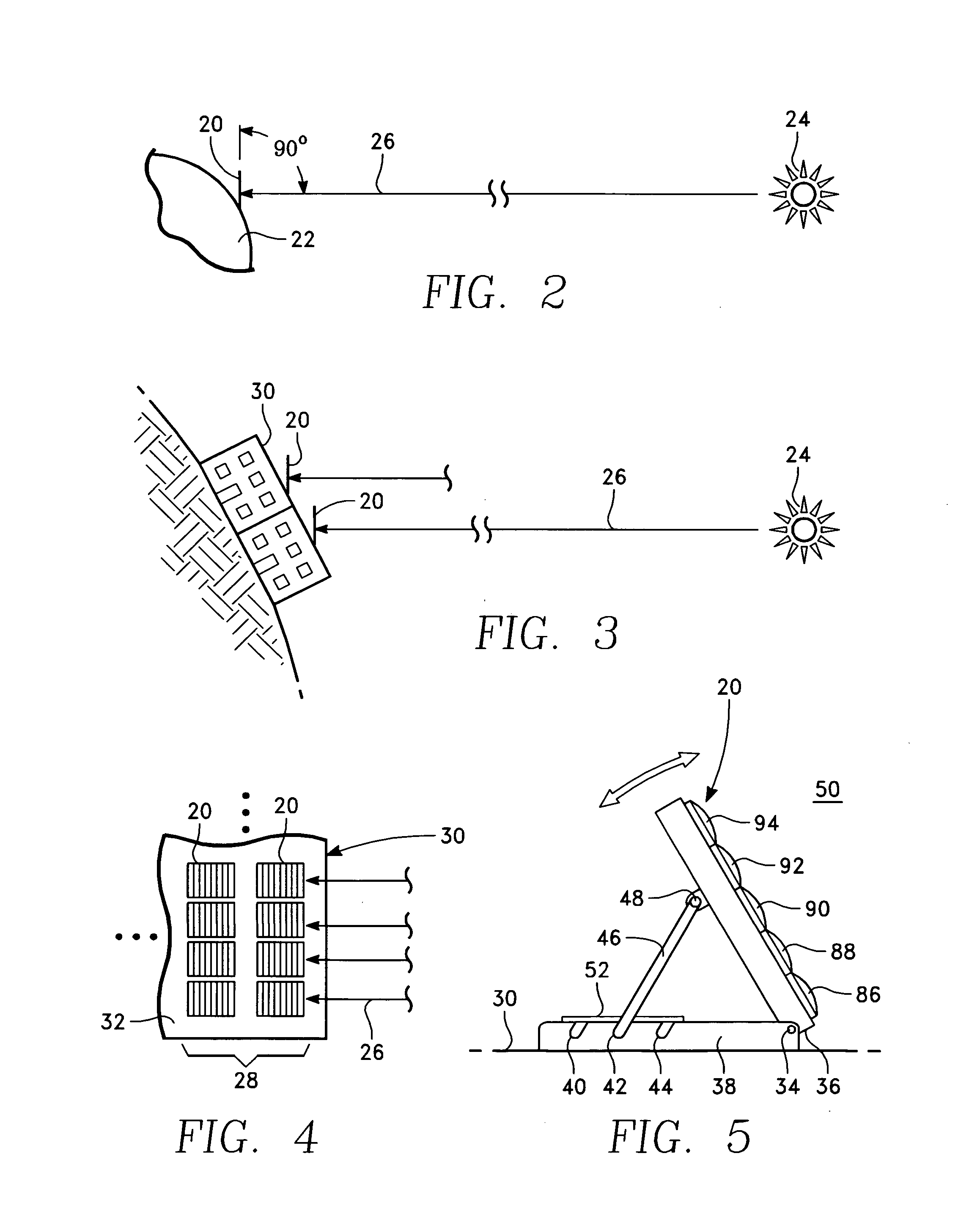Economic solar electricity panel system
a solar energy panel and solar energy technology, applied in the direction of lighting and heating equipment, pv power plants, sustainable buildings, etc., can solve the problems of reduced sun energy, uneconomic collection, and weight limitation, and achieve the effect of preventing contamination, reducing cost and wind resistance, and light weigh
- Summary
- Abstract
- Description
- Claims
- Application Information
AI Technical Summary
Benefits of technology
Problems solved by technology
Method used
Image
Examples
Embodiment Construction
[0035]Referring to the drawings more particularly by reference numbers, number 20 in FIGS. 1A and 2 refers to a solar panel constructed according to the present invention in position on the earth 22 with respect to the sun 24. As shown in FIGS. 1A, 1B, and 2, the panel 20 is normally positioned at an angle to the earth 22 approximating the latitude of the panel's location on the earth 22. In most cases, the panel 20 is positioned perpendicular to the sun's rays 26a at mid-morning and mid-afternoon (sun 24a position) so that the sun's rays 26b and 26c strike the lens 27 (the lens 27 extends into the paper) at an acceptance angle of 30° to 35° close to sunrise and sunset (sun position 24b), and at high noon (sun position 24c). However, solar electricity is normally a “topping” electrical source, to supply electricity during peak demands. If the peak demand is caused by air conditioning, ambient air temperature lags the sun 24 by about two hours, so the panel 20 may be orientated to be...
PUM
 Login to View More
Login to View More Abstract
Description
Claims
Application Information
 Login to View More
Login to View More - R&D
- Intellectual Property
- Life Sciences
- Materials
- Tech Scout
- Unparalleled Data Quality
- Higher Quality Content
- 60% Fewer Hallucinations
Browse by: Latest US Patents, China's latest patents, Technical Efficacy Thesaurus, Application Domain, Technology Topic, Popular Technical Reports.
© 2025 PatSnap. All rights reserved.Legal|Privacy policy|Modern Slavery Act Transparency Statement|Sitemap|About US| Contact US: help@patsnap.com



